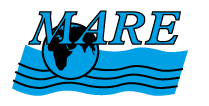A program of the Lawrence Hall of Science that seeks to increase ocean literacy through informal and formal education initiatives
Origami Sea Life
llustrated instruction book features 38 unusual subjects, from simple to complex, each graded for difficulty. Sailfish, tadpole, killer whale, bay barnacle, dolphin, horseshoe crab, barracuda, blue crab, American lobster and many more. Step-by-step instructions, notes on animals, technique of wet folding, much more. Over 2,400 black-and-white illustrations.
Why the Tides Ebb and Flow
This is a folktale of irresistible charm, whose flowing language, humorous situations, and repeated rhymes make it a favorite read-aloud in many classrooms. In this tale that explains the tides, a very stubborn old woman has been promised a rock to shelter her from the weather. She chooses the very rock that Sky Spirit doesn’t want to give her—the rock that plugs the hole in the bottom of the sea. Her humorous persistence finally wins her all she wants and more.
Prince William
Denny rescues a baby seal caught in an oil spill in Prince William Sound, Alaska. She takes the seal—whom she names Prince William—to an emergency animal rescue facility, where he, with hundreds of other animals, is cared for and cleaned of oil. Denny follows his progress for weeks, until Prince William is ready to return to the sea. The story is based upon actual events and brings home the suffering experienced by wildlife. The reader can see, in both text and illustrations, the ecological impact of oil spills, and the effort involved in attempting to restore the damage.
Follow Me!
This is a very gentle story of a young sea lion who follows a crab traveling along the rocks. It can support or spawn discussions of animals and their habitats. Another excellent use of this book is for sheltered instruction. Since the book is wordless, the students themselves can write the story—in the language of their choice.
Brown Pelican at the Pond
Written by a child, this simple story tells of a boy and his friends, who on a visit to a pond, find an injured pelican, take it to a vet, then nurse it back to health. The boy then returns it to the pond "because he belonged with other pelicans." Can be the start of a classroom discussion on understanding the needs of animals.
What Lives in a Shell? (Let's Read And Find Out Series)
A house is a home for you, a nest is a home for a bird, and a cave is a home for a bear. But for some animals a shell is a home. Snails and turtles and crabs and clams all have shells that act as their homes and protect them from harm. In this book you'll learn all about these and other crustaceous creatures, for whom a shell is just the right sort of home.
Stella, Star of the Sea
In Stella, Star of the Sea (which won a Governor General's Award for illustration), the gifted picture-book artist introduces the irresistible duo of Sam and his spirited older sister, Stella. "Stella and Sam were spending a day at the sea shore," Gay begins this playful celebration of summer, adding, "It was Sam's very first time." Stella is an adventurer, eager to dive to the ocean floor, tame sea horses, and dig a hole to China, but her little brother, Sam, is made of more cautious stuff.
Plant and Animal Partners
This book is about the co-dependant relationship or partnership between some plants and animals. The book covers relationships found in the grasslands of Africa, the rainforests of South America, and undersea coral reefs.
Where is Dinah Diatom?
Let Dinah Diatom and her friends take you on a journey along a food chain in the sea. Colorful illustrations and simple rhyming text make this book come alive for children. Familiar West Coast creatures trace the flow of energy through a marine ecosystem from diatoms to whales. Parents and teachers will appreciate ample background information on food chains, and suggestions on how to use the book.
The Lorax
When Dr. Seuss gets serious, you know it must be important. Published in 1971, and perhaps inspired by the "save our planet" mindset of the 1960s, The Lorax is an ecological warning that still rings true today amidst the dangers of clear-cutting, pollution, and disregard for the earth's environment. In The Lorax, we find what we've come to expect from the illustrious doctor: brilliantly whimsical rhymes, delightfully original creatures, and weirdly undulating illustrations.
Pages




